Sahaj (Easily Done) Movements
Somaesthetic Movement Nudging System for Enhanced Well-being
Sahaj represents a paradigm shift from disruptive reminders to intuitive movement integration, using somaesthetic principles to create a harmonious relationship between body, mind, and work environment. Our system was tested with 30 participants over 8 weeks, showing significant improvements in body awareness, movement frequency, and overall well-being scores.
Timeline
8 weeks
Role
UX Designer
Year
2020
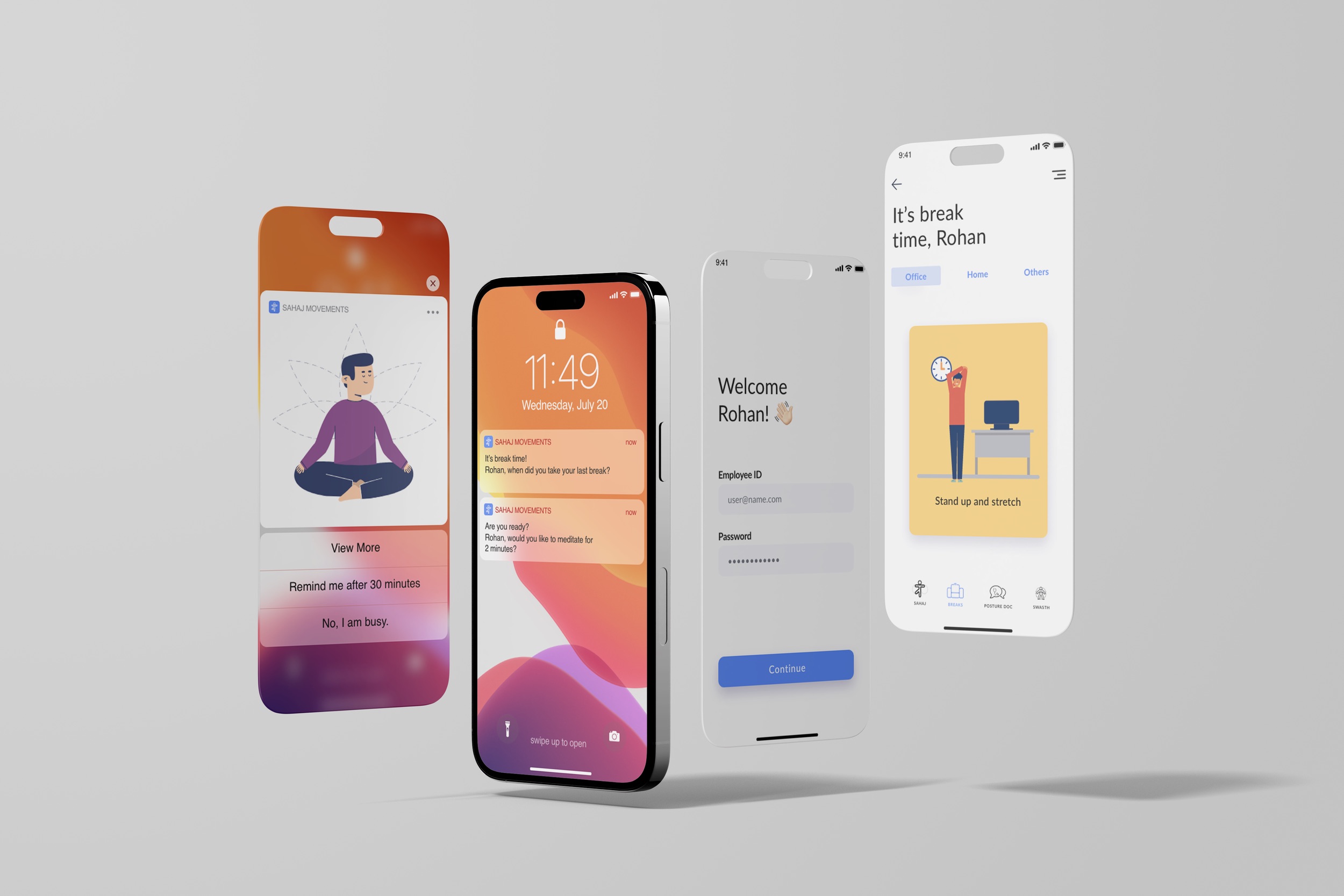
Project Overview
"It's okay to take rest when you need it, not just when you earn it."
In today's screen-heavy work culture, prolonged sitting is often treated as the default. But stillness affects posture, energy, and long-term health.
The Sahaj approach reimagines the desk routine by embedding intentional movement into daily work. Through behavioral nudges and Office Yoga practices, it encourages regular shifts in posture and mindset while maintaining workflow.
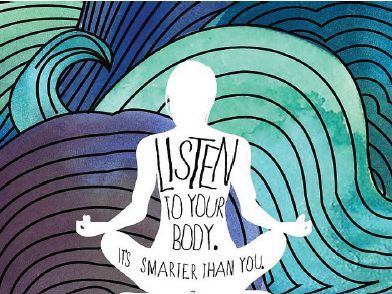
Body First in a Screen-First World

Desk jobs often lead to prolonged stillness, putting physical strain on muscles and posture. When movement signals from the body are ignored, they build up and contribute to pain, fatigue, and stress.
This project examines how technology can shift from being part of the problem to part of the solution. By applying a body-first approach, it uses digital tools to encourage small, restorative movements throughout the workday.
The goal is not just to treat discomfort but to redesign the workplace experience to honor bodily rhythms, awareness, and care.
Understanding the Landscape
To establish a strong foundation for the project, secondary research was conducted to examine posture theory, ergonomic principles, current workplace behaviors, and gaps in existing interventions.
Somaesthetic methods were employed to validate conceptual directions through embodied practice, particularly by engaging in regular yoga routines. In parallel, expert consultations with healthcare professionals and workplace wellness practitioners provided valuable insights into the role of movement in sedentary work environments.
These investigations informed the development of focused research questions that shaped the direction of subsequent primary fieldwork.
State of the Art
To understand existing workplace movement initiatives, technological interventions for posture correction, and employee wellness strategies, with the intent to identify gaps and areas for innovation.
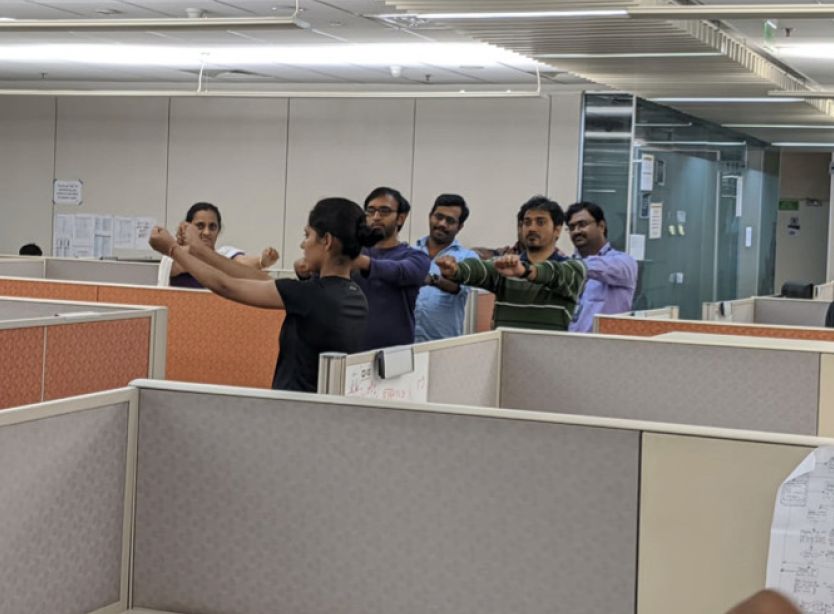
At Office
On-site wellness practices like standing desks, healthy breaks, and guided sessions to reduce sedentary fatigue.
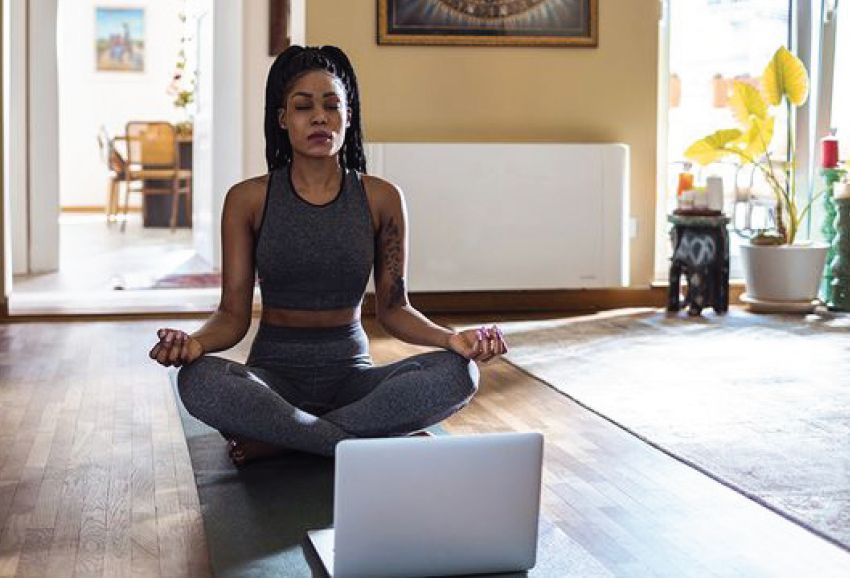
At Home
Remote initiatives such as virtual yoga, fun events, and ergonomic benefits to support movement and morale.
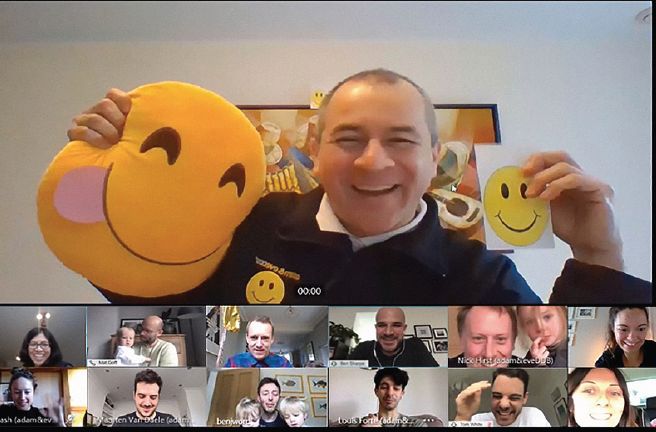
Corporate Trends
Company-wide programs using apps, gamification, and mindfulness tools to promote holistic employee health.
Market Products & Technologies
Posture-focused wearables and coaching systems dominate the current market. These devices use motion sensors and haptic feedback to track and correct alignment.
Wearable Coaching Systems
Provide real-time prompts and movement tracking via connected apps.
Posture Monitoring Sensors
Use flex, inertial, or textile-based sensors to detect poor posture.
Commercial Devices
LumoLift, Upright, and SpiderMed II use IMUs, accelerometers, and vibration feedback for posture correction.
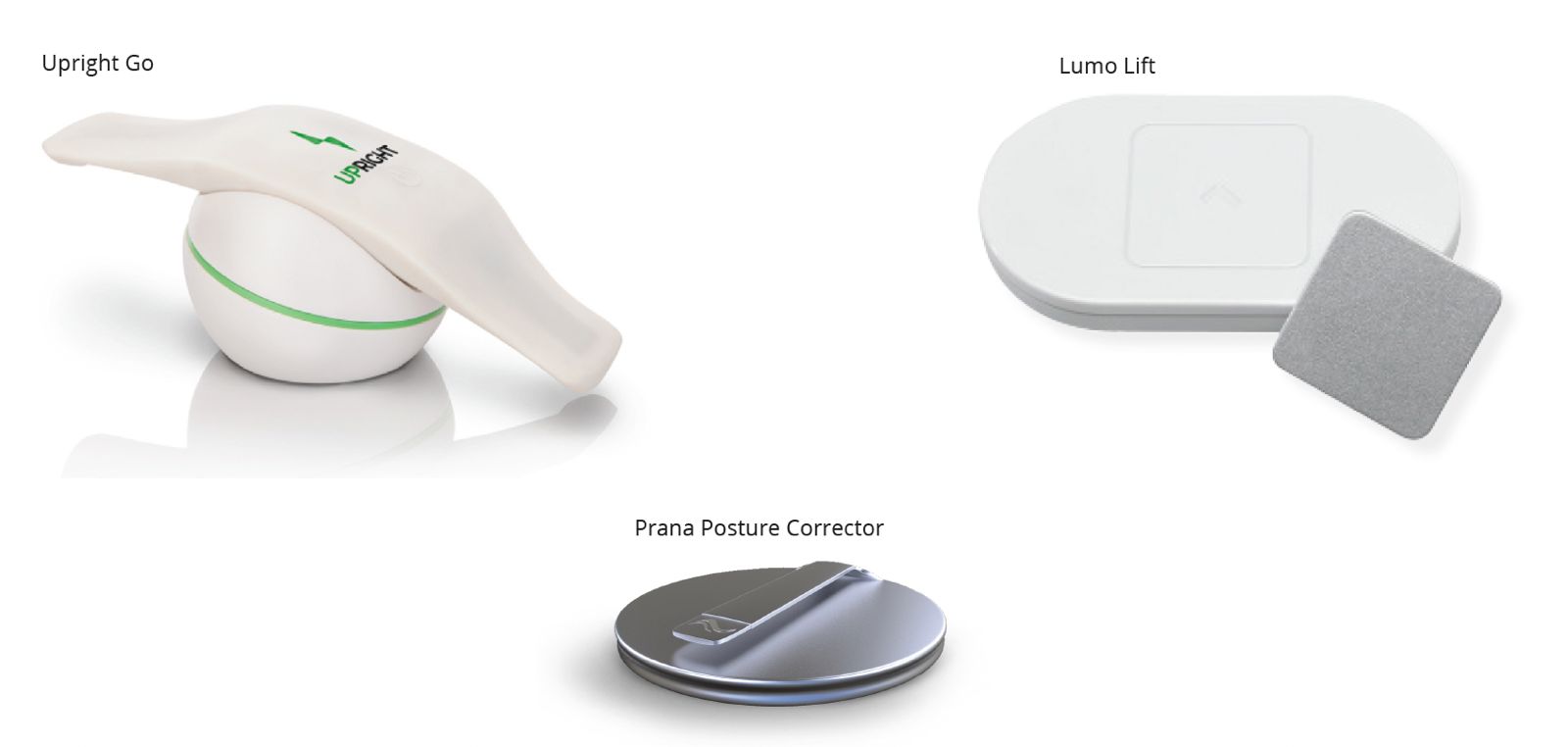
Findings
Movement is increasingly seen as essential to employee well-being.
Existing solutions primarily focus on posture correction and passive tracking.
Few tools support body awareness or somatic engagement in everyday workflows.
Most products feel clinical and lack emotional or contextual integration within the workplace.
Opportunity Areas
Introduce movement systems that are emotionally engaging and context-aware.
Bring body-first thinking into corporate wellness strategies.
Design for embodied movement exploration during daily work, not just correction.
Somaesthetics as Foundation
The project draws deeply from somaesthetic philosophy, using the body as a site of knowledge and change. Daily yoga and mindfulness practices grounded the team in firsthand bodily awareness, allowing a more empathetic, embodied understanding of stress, fatigue, and posture. These practices not only shaped the problem framing but also inspired design cues that promote internal reflection and intentional movement in the workplace.
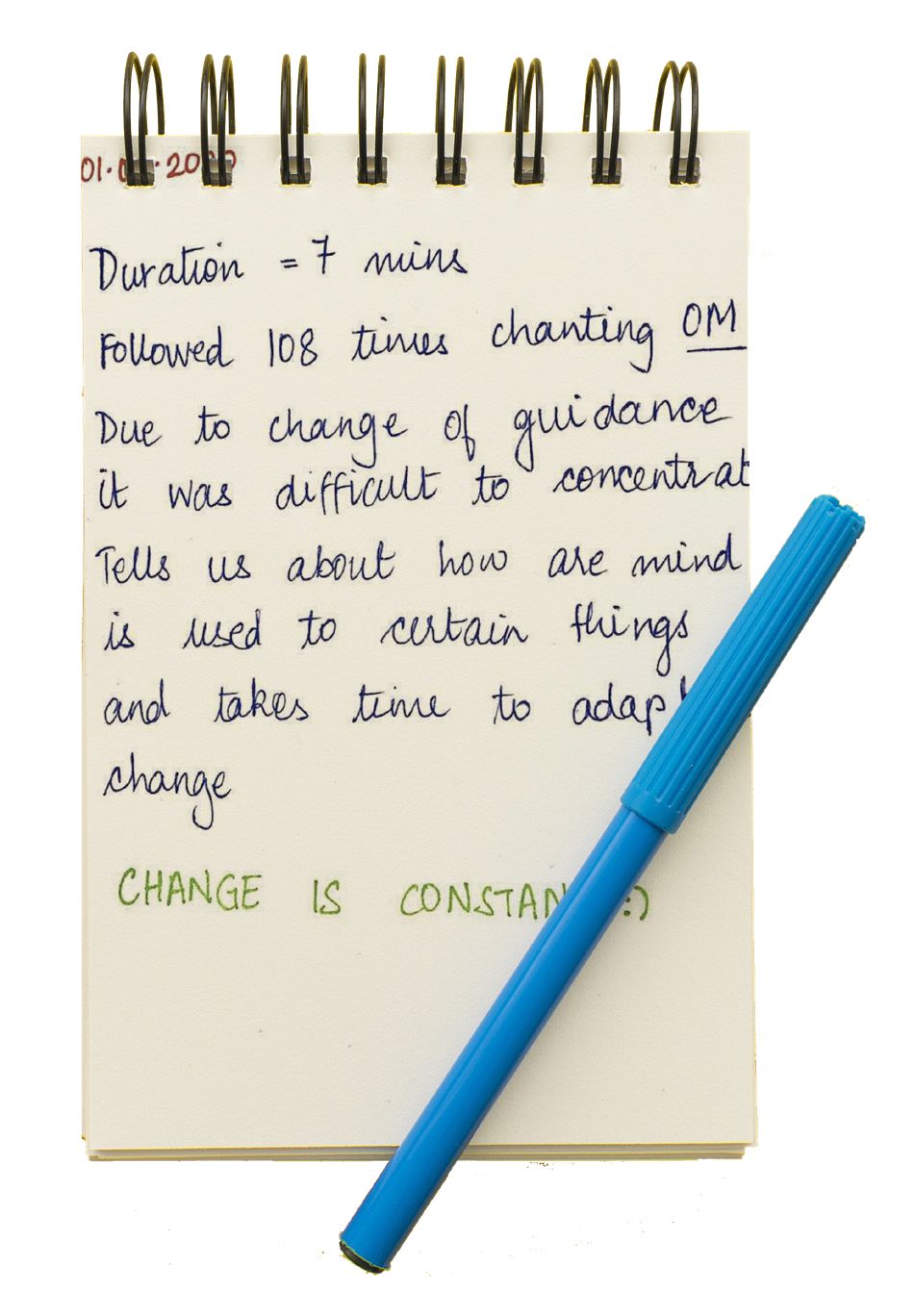
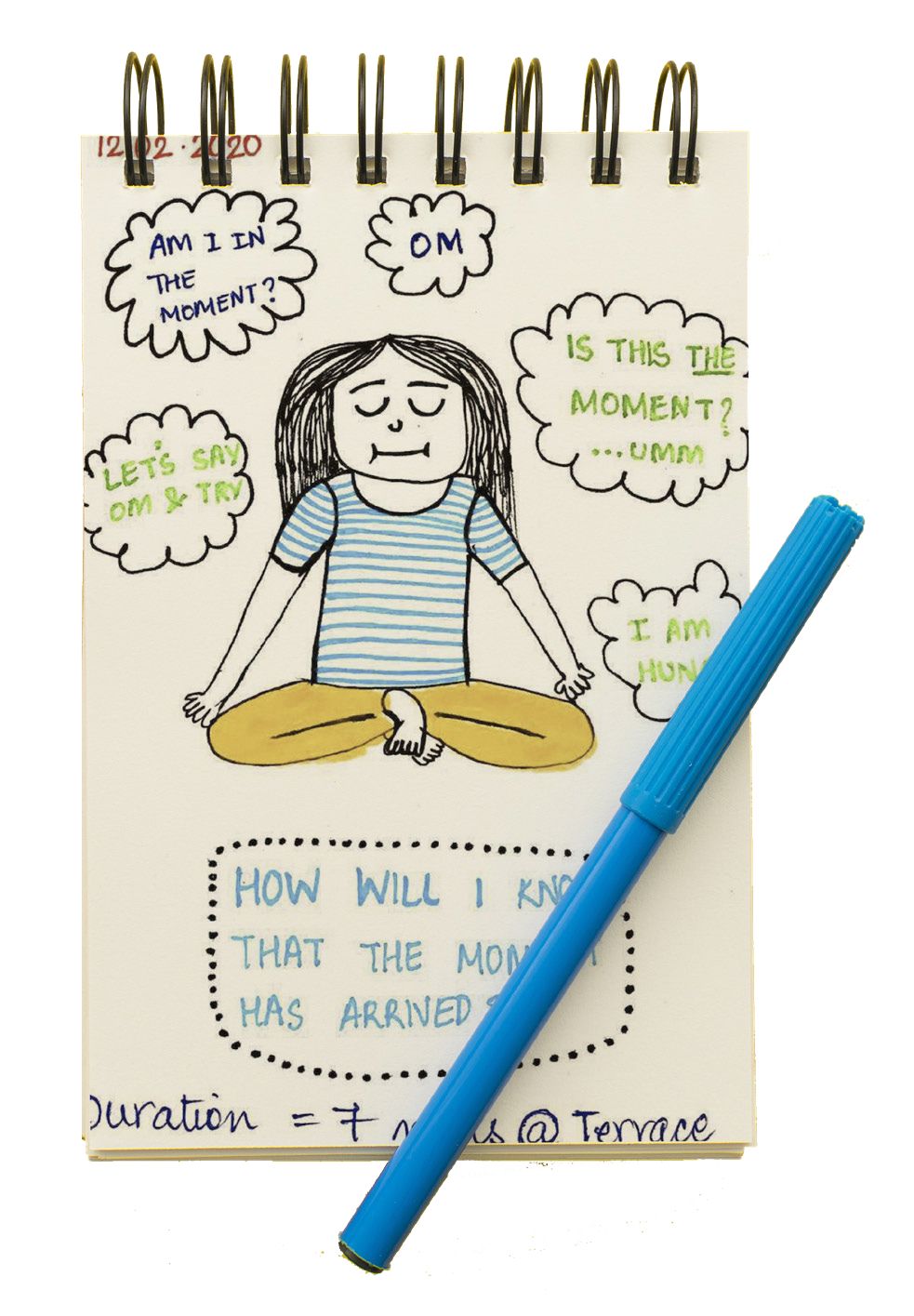
Field Research
To better understand workplace posture and wellness, we conducted field research across corporate and co-working environments. Through 35 semi-structured interviews, observational studies, and embodied exercises, we gained insight into employee habits, challenges, and somatic awareness at work. All participants provided verbal consent, and ethical protocols were strictly followed.
Research Objectives
User Motivations & Pain Points
Understand user motivations and pain points
Concept Exploration
Explore new concepts and gaps in wellness tools
Factor Analysis
Analyze posture-affecting factors like habit, age, gender, clothing
Data Synthesis
Synthesize data using affinity mapping and personas
Company & Participant Demographics
Research Summary
35 interviews
8+ companies
Company Examples
IBM, HP, Cleartrip, Reliance Jio
Location
Bangalore-based MNCs and coworking spaces
Participants
Roles across seniority levels
Key Exercises and Tools
Exercise 1: Posture Checklist
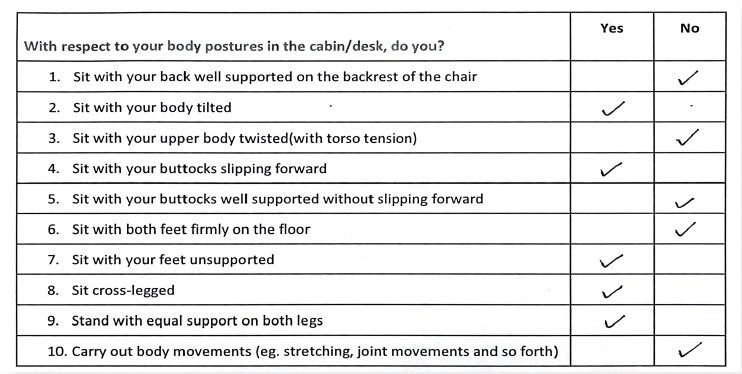
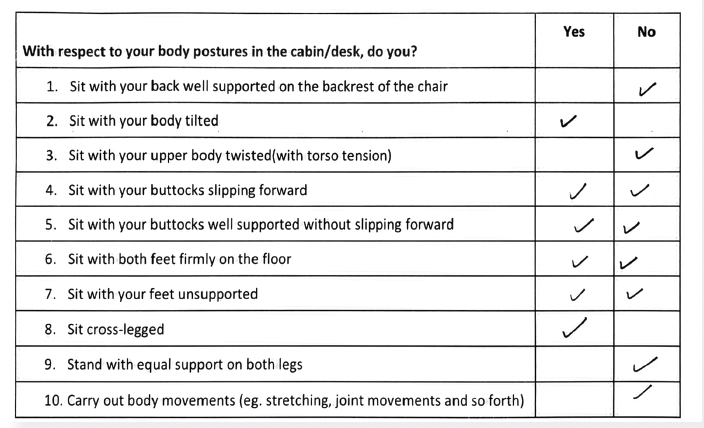
Key Finding:
Very few participants actively carried out movement, despite knowing health impacts.
Exercise 2: Posture Sketching
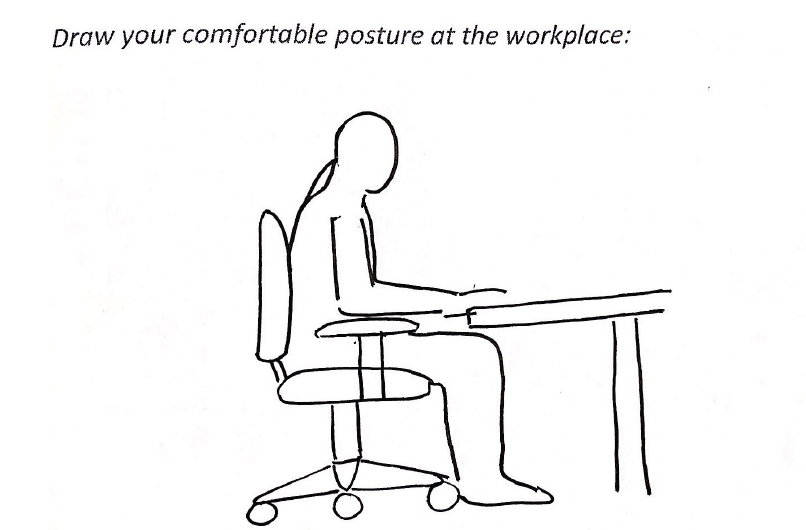
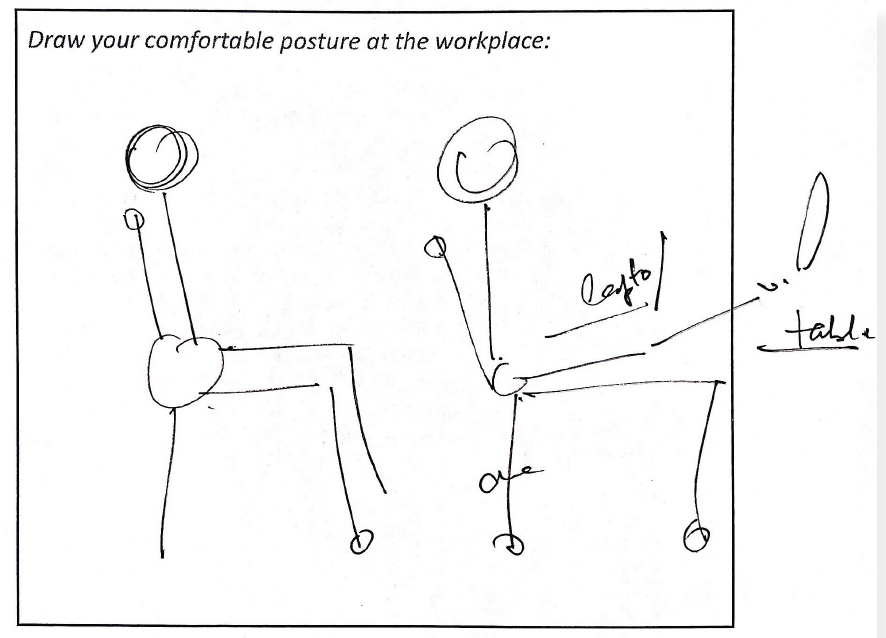
A somaesthetic sketching task helped participants recall and express their most comfortable working posture. This method supported embodied reflection beyond verbal responses.
Key Insights
Posture & Pain
- •Back pain stems from prolonged stationary posture, not just poor posture.
- •Postural awareness is key to improving musculoskeletal health.
- •The perceived importance of posture often outweighs its actual impact.
Habit & Movement
- •Regular movement is essential to break sedentary work patterns.
- •Replace bad habits with good ones; consistency builds good posture.
- •Conscious repetition of new movements forms lasting habits.
- •Habits are cue-routine-reward cycles; make routines memorable.
Motivation & Reinforcement
- •Consistent reminders are needed for office work.
- •Immediate reinforcement boosts desired behavior efficiency.
- •Fear of survival can prompt action.
Somatic Practice & Environment
- •Yoga becomes somatic when focusing on experience, not just "doing."
- •Work-from-home comfort should blur boundaries with office spaces.
- •Workspace dynamics should not negatively impact work.
Ideation
Exploring concepts and solutions for workplace posture improvement
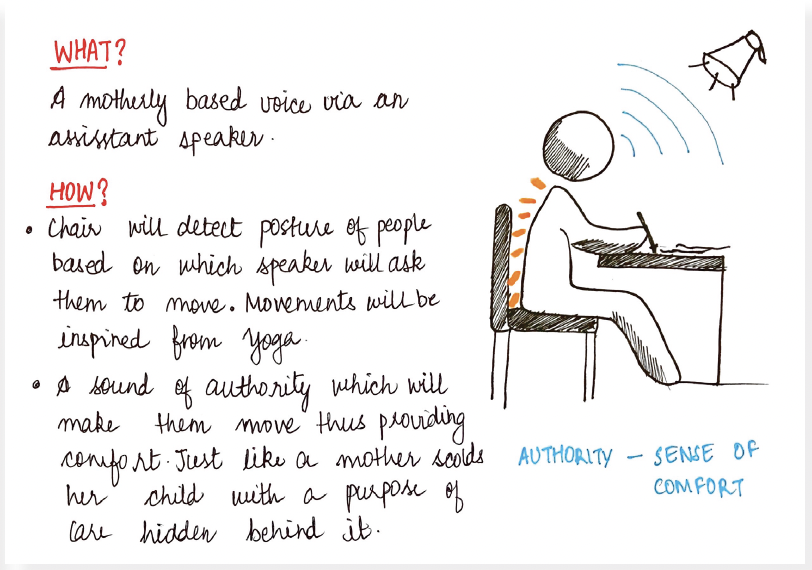
Sahaj
Sahaj is a workplace movement system designed to reduce sedentary behavior through intuitive, yoga-inspired micro-movements. Rooted in behavioral science and somaesthetics, it nudges users toward healthier posture habits without disrupting their workflow.
The model works in four steps:
Posture Calibration
Users set their ideal sitting posture using computer vision.
Posture Monitoring
The system runs in the background, tracking deviations like slouching.
Visual Reminders
If poor posture continues, a soft screen notification is triggered.
Personalized Nudges
The app recommends guided desk exercises to restore alignment and mindfulness.
By reinforcing positive habits with real-time feedback, Sahaj helps build sustained behavioral change and promotes a more mindful, movement-friendly work culture.
Digital Experience
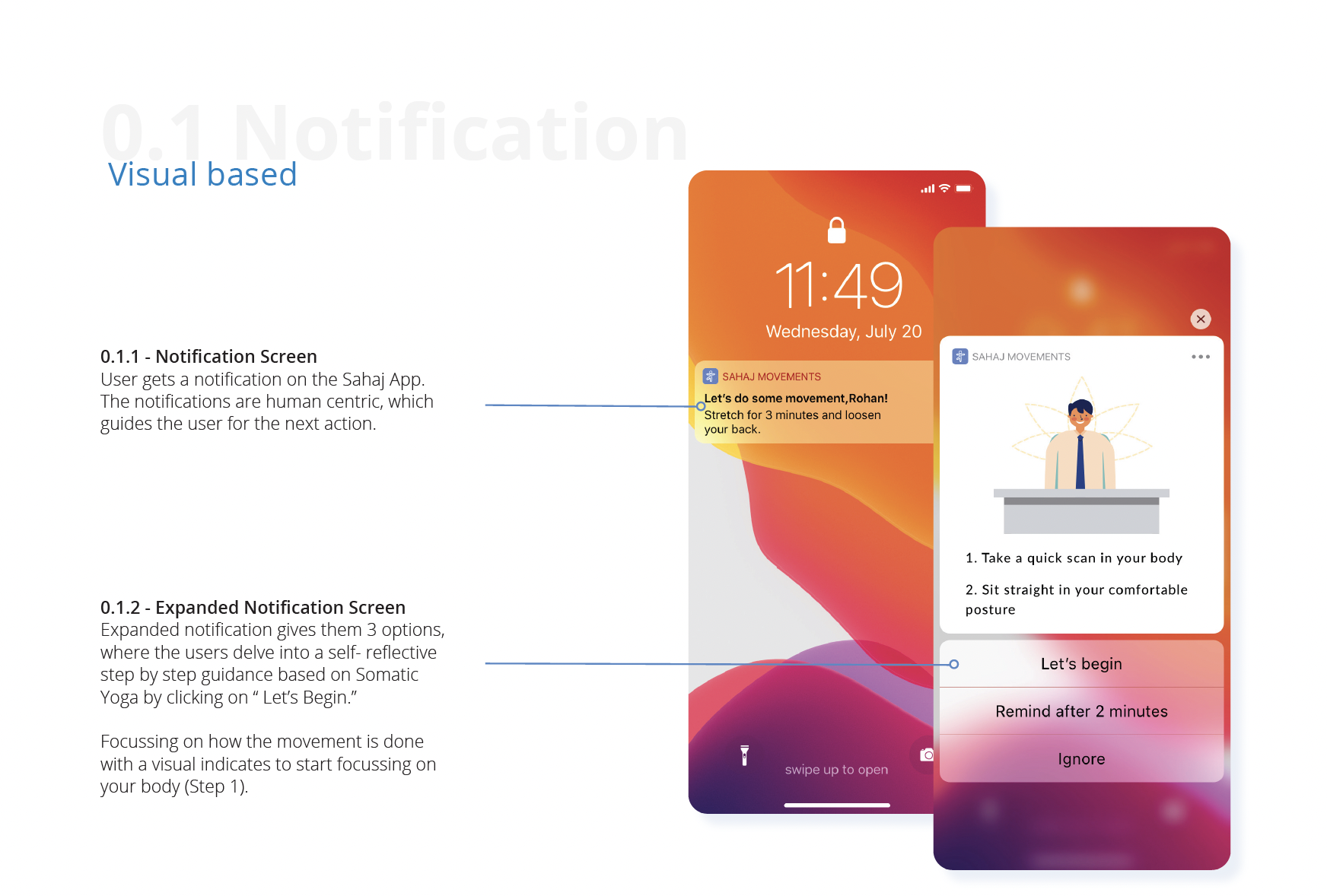
Impact & Results
The Sahaj system was tested with 30 participants over 8 weeks, showing significant improvements in body awareness, movement frequency, and overall well-being scores.
Long-term Benefits
Physical Improvements
- • Reduced back and neck pain
- • Better posture throughout the day
- • Increased energy levels
Cognitive Benefits
- • Enhanced focus and concentration
- • Improved creative thinking
- • Better stress management
Learning
Key insights from designing a somaesthetic approach to workplace wellness
Designing with the body required a shift from screens to sensations
This project taught me to prioritize embodied awareness over conventional UI. Creating somatic nudges meant listening to bodily cues, not just user feedback, which expanded how I approach user experience design.
Context deeply influences how movement is perceived
Through field research, I learned that what feels natural at home can feel disruptive in a corporate setting. This highlighted the importance of designing context-sensitive interventions that feel intuitive, not intrusive.
Somatic practices offer untapped potential in design
Integrating somaesthetic methods like journaling, sketching, and posture reflection revealed how deeply people relate to their physical discomfort. These methods helped surface emotional and behavioral patterns that traditional interviews might miss.
Wellness solutions must balance subtlety with clarity
Users respond best to cues that are neither too passive nor overly directive. Striking that balance made me more intentional about timing, placement, and tone in interaction design.